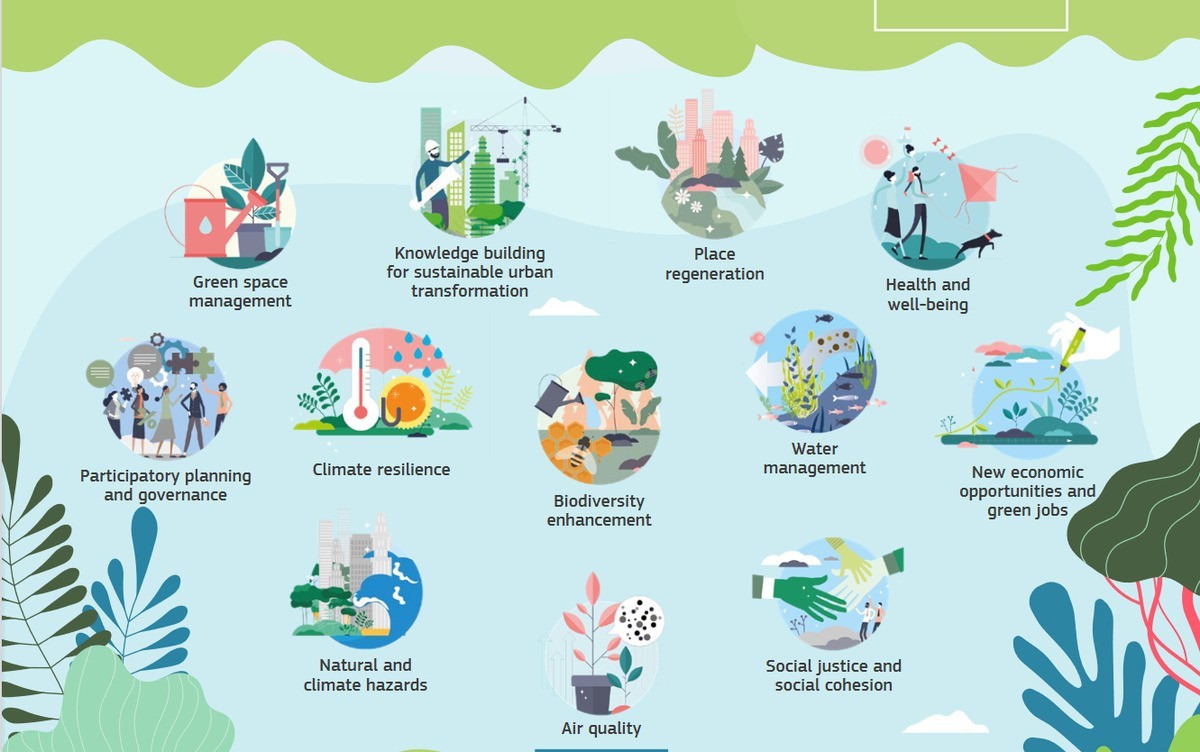Evaluating the impact of nature-based solutions

The Handbook aims to provide decision-makers with a comprehensive NBS impact assessment framework, and a robust set of indicators and methodologies to assess impacts of nature-based solutions across 12 societal challenge areas: Climate Resilience; Water Management; Natural and Climate Hazards; Green Space Management; Biodiversity; Air Quality; Place Regeneration; Knowledge and Social Capacity Building for Sustainable Urban Transformation; Participatory Planning and Governance; Social Justice and Social Cohesion; Health and Well-being; New Economic Opportunities and Green Jobs.
Indicators have been developed collaboratively by representatives of 17 individual EU-funded NBS projects and collaborating institutions such as the EEA and JRC, as part of the European Taskforce for NBS Impact Assessment, with the four-fold objective of: serving as a reference for relevant EU policies and activities; orient urban practitioners in developing robust impact evaluation frameworks for nature-based solutions at different scales; expand upon the pioneering work of the EKLIPSE framework by providing a comprehensive set of indicators and methodologies; and build the European evidence base regarding NBS impacts. They reflect the state of the art in current scientific research on impacts of nature-based solutions and valid and standardized methods of assessment, as well as the state of play in urban implementation of evaluation frameworks.
The objective of this handbook is to support the adoption of common indicators and methods for assessing the performance and impact of diverse types of NBS. The handbook is designed to be relevant for NBS implemented across a wide geographic area and at a multitude of scales. The integrated NBS assessment framework presented in the handbook has been developed with the three-fold objective of:
- Serving as a reference for relevant EU policies and activities;
- Orienting urban practitioners in developing robust impact evaluation frameworks for nature-based solutions at different scales; and,
- Providing a comprehensive set of indicators and methodologies.
Read the Handbook for Practitioners
News published on Build Up Publications
Consult the source



